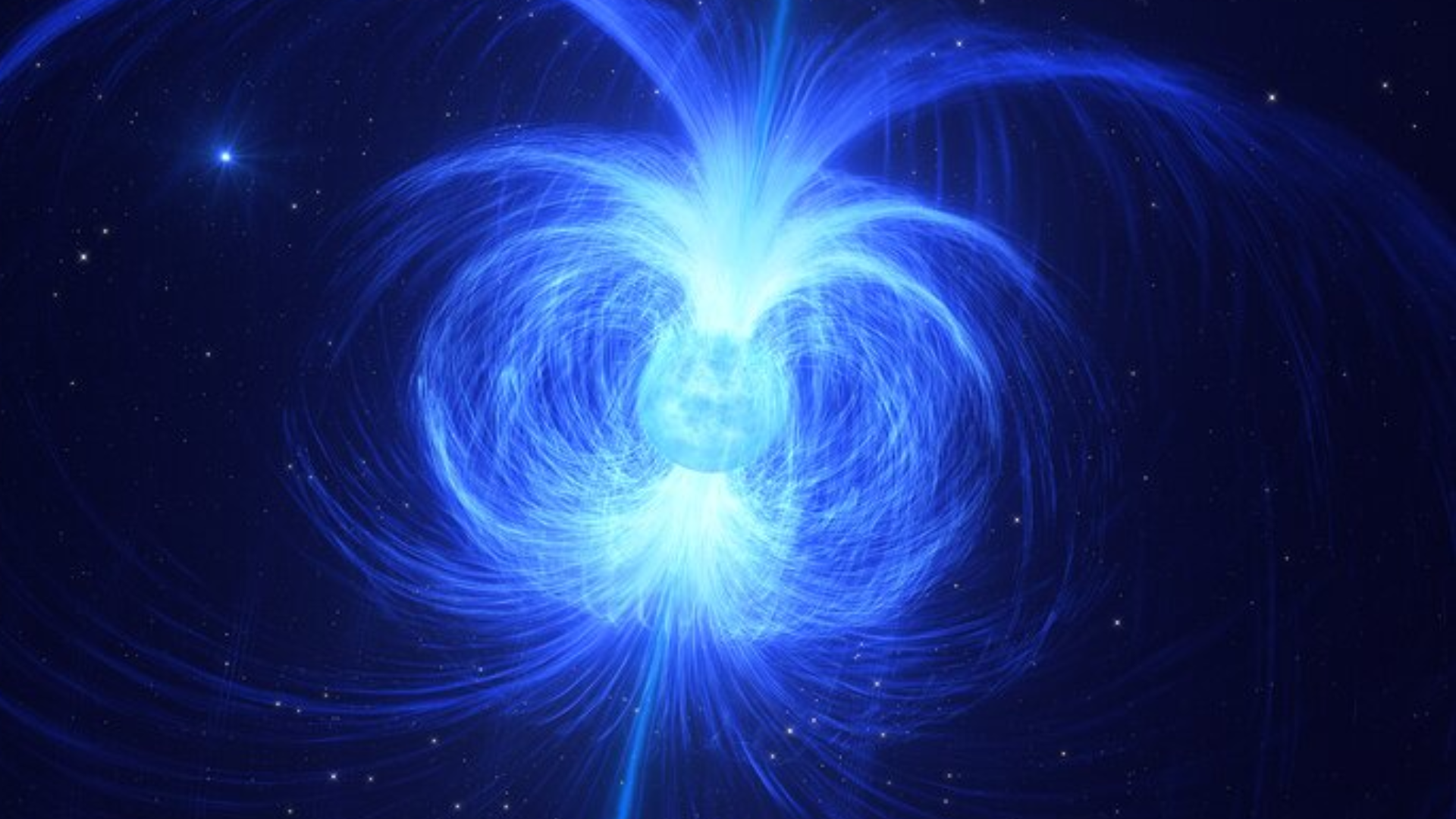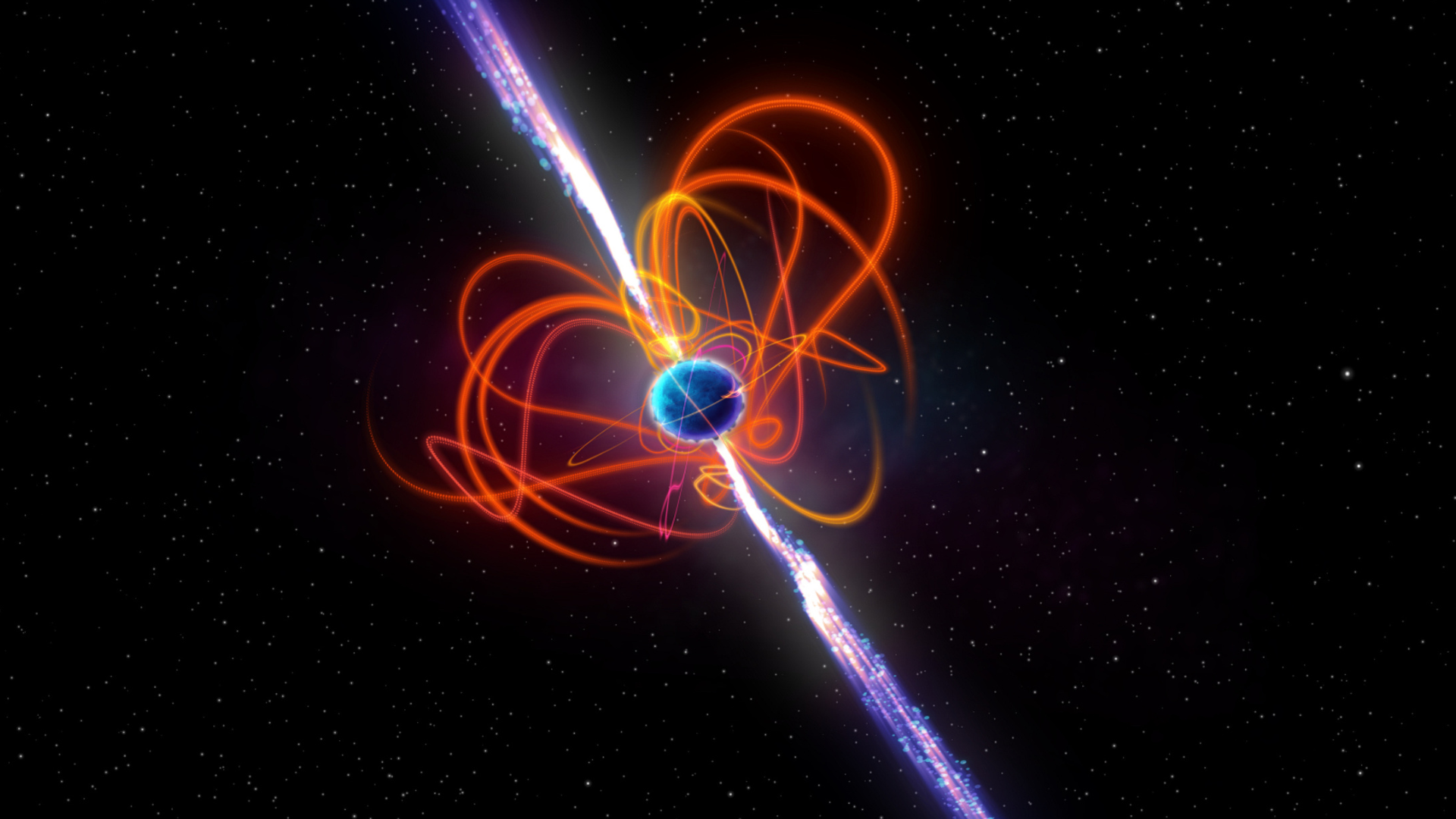Powerful helium star could finally reveal secrets about highly magnetic stellar corpses
"This is the first time we have found a magnetic massive helium star; such objects were not really predicted prior to this."

Astronomers believe a well-known object is actually a new type of star — and it's one that could be the "missing link" in models showing the formation of stellar corpses with extremely powerful magnetic fields, known as magnetars.
The team found that HD 45166, a star in a binary system that's been studied for over 100 years and sits around 3,000 light-years from Earth, is a highly magnetic helium star. This is a type of stellar body that hadn't previously been predicted to exist.
"This is the first time we have found a magnetic massive helium star," Tomer Shenar, lead author of the discovery and an astronomer at the University of Amsterdam, told Space.com. "This is also the strongest field ever detected in a massive star that may undergo core collapse and become a neutron star."
Related: Record-breaking 'failed' star orbiting stellar corpse is 2,000 degrees hotter than the sun
Shenar explained that this is a binary system with very unique properties. One star, for instance, was reported to be a massive helium star that was stripped of its hydrogen-rich layers by a mechanism thus far unknown. Many highly evolved stars, such as this subject, are thought to have their inner helium layers exposed and are referred to as Wolf-Rayet stars.
"These massive helium stars are predicted to exist abundantly in the Milky Way, but we've never really found any in this mass range," Shenar said.
Not only is HD 45166 an important prototype for this class, but Shenar also pointed out that published literature on the object seems to defy our understanding of massive helium stars.
Get the Space.com Newsletter
Breaking space news, the latest updates on rocket launches, skywatching events and more!
"It is this conflict between observation and theory that made me and others increasingly obsessed with HD 45166 and eventually led to the hypothesis that it may be magnetic," he said. "The most important discovery we made was that the massive helium star exhibits an extremely powerful magnetic field totaling 43,000 gauss."
For comparison, the sun's magnetic field has an average strength of around 1 single gauss.
Beyond the mystery of this system and its unusual properties, the discovery of a massive, highly magnetic helium star like this one could explain how some of the universe's most extreme objects are born.
How are magnetars are born?
Neutron stars are stellar corpses created when massive stars finally run out of fuel necessary for their intrinsic nuclear fusion processes, and when the energy that provides an outward push against an inward gravitational pull ceases.
No longer able to support themselves against their own gravity, the cores of these dying stars collapse rapidly while the outer layers are blown away in massive supernova explosions.
This results in a leftover stellar core with a mass around that of the sun, but one crammed into a diameter of between 12 and 20 miles (19 and 32 km). That's no wider than a standard city here on Earth. As a result, neutron stars are composed of matter so dense a teaspoon of one would weigh something like 10 million tons if brought over to Earth.
Such a downsized width also speeds up the rotation of the dead stellar core, much like how an ice skater speeds up their spin by drawing in their arms. This results in some neutron stars rotating as fast as 700 times per second. About 10% of neutron stars are magnetars, even more extreme versions of such stellar remnants that possess magnetic fields as great as 100 trillion gauss.
"It remains unclear how magnetars become magnetic in the first place," Julia Bodensteiner, a member of the discovery team and a research fellow at the European Southern Observatory (ESO), told Space.com. "One possible idea is that the magnetar inherited the magnetic field from the collapsing core of its progenitor, implying that the star was magnetic beforehand. Until now, no magnetic massive stars close to the end of their evolution had been found."
That is, until the team discovered the nature of HD 45166.

"Our results suggest that the magnetic star in HD 45166 will, in a few million years, collapse into a magnetar," Shenar said. "This highly magnetic star therefore provides clues as to a possible formation route of these mysterious objects."
The team thinks that as HD 45166 collapses under its own gravity, its magnetic field will strengthen by up to a billion times because its magnetic field lines will bunch together. Then, the massive helium star will become an incredibly compact stellar corpse, or core with a magnetic field of around 100 trillion gauss, the most powerful type of magnetar in the known universe.
The research also suggests a mechanism by which HD 45166 itself might've formed, with the team thinking the magnetic star is the result of two lower-mass helium stars merging during a unique evolutionary phase.
This is indicated by the fact that the astronomers discovered that HD 45166 has a mass around twice that of the sun, which is smaller than previously predicted, and from the revelation that the residents of the binary system orbit each other at a much wider distance than previously thought.
The team discovered the unique nature of the star HD 45166 when they observed it and its binary system companion in Feb. 2022 using the Echelle SpectroPolarimetric Device for the Observation of Stars (ESPADONS), an instrument on the Canada-France-Hawaii Telescope in Hawaii that can detect and measure magnetic fields.
They will now continue to monitor HD 45166 with ESPADONS and other instruments as they attempt to gain information about the star's morphology and reveal the orientation of its magnetic field. Meanwhile, Shenar said monitoring the binary system with instruments such as the GRAVITY interferometer on the Very Large Telescope (VLT) will allow astronomers to resolve the positions of the two stars in the system, something that can help accurately determine the objects' individual masses.
"Additionally, we will be looking for other objects that could belong to this new class of stars," Shenar concluded. "This new class really sheds new light on how stellar pairs live and interact and how at least some magnetars may form, so it's important to continue studying HD 45166 and other objects in this class."
Bodensteiner explained the idea is to look for signatures of a magnetic field in HD 45166 that can trigger more expansive, comprehensive searches for stellar magnetic fields that appear to be situated on Wolf-Rayet stars.
"A systematic search for those will most likely allow us to detect more such systems, and therefore allow us to better understand themselves, in particular their magnetic fields, and their importance in the context of magnetar formation," she concluded.
The team's research was published this month in the journal Science.
Join our Space Forums to keep talking space on the latest missions, night sky and more! And if you have a news tip, correction or comment, let us know at: community@space.com.

Robert Lea is a science journalist in the U.K. whose articles have been published in Physics World, New Scientist, Astronomy Magazine, All About Space, Newsweek and ZME Science. He also writes about science communication for Elsevier and the European Journal of Physics. Rob holds a bachelor of science degree in physics and astronomy from the U.K.’s Open University. Follow him on Twitter @sciencef1rst.









